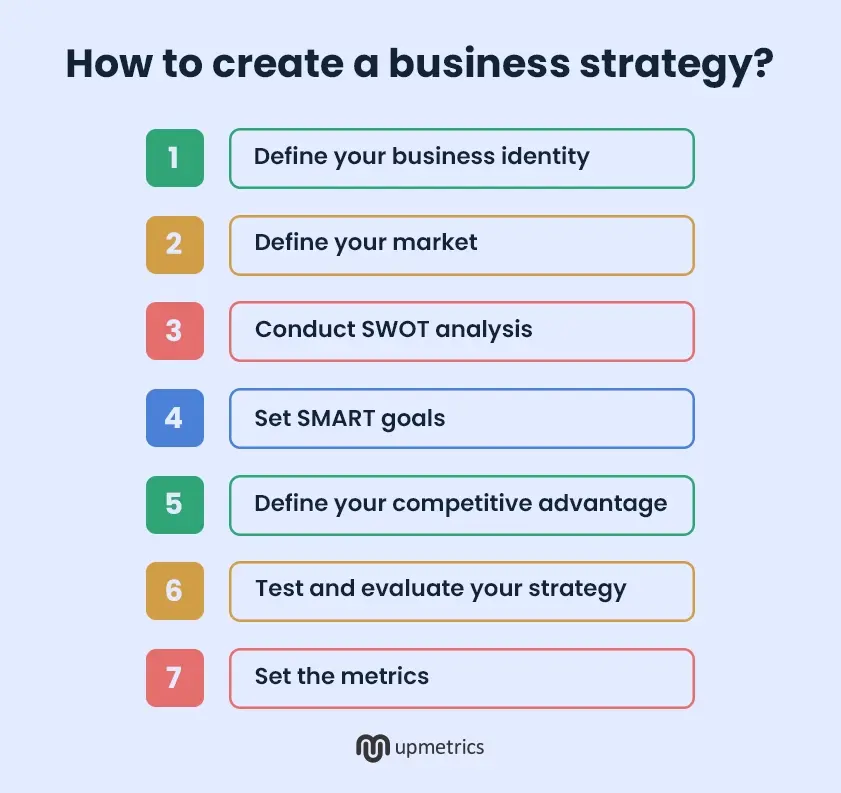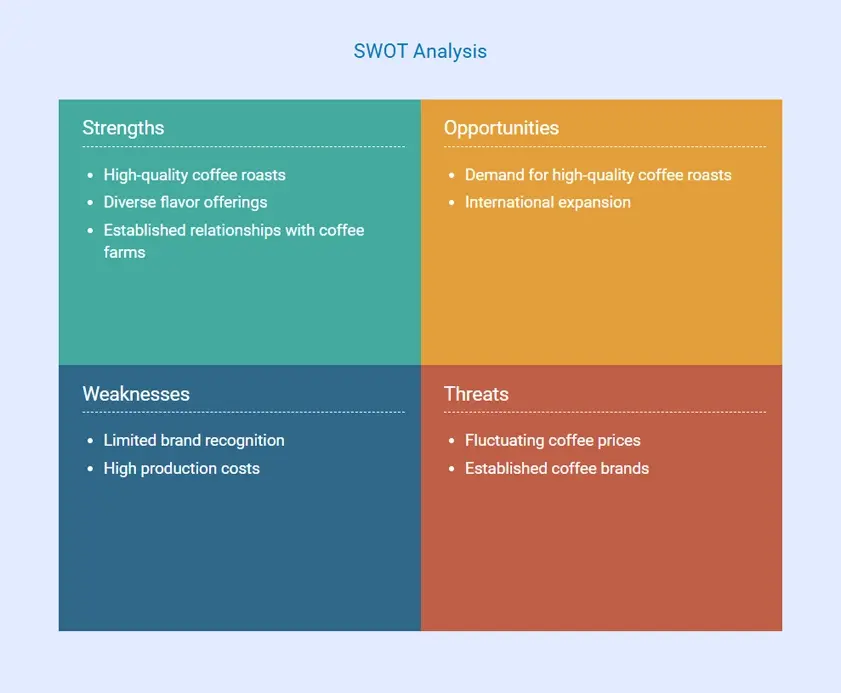According to a Forbes survey, nearly 90% of executives believe that having a strategic plan is essential to running a successful business. Yet, only 40% of these executives actually invested time in creating their strategic plans.
Doesn’t this seem contradictory?
The truth is: Most executives shy away from strategy-building because it feels like assembling IKEA furniture without the instructions — overwhelming, confusing, and potentially rage-inducing.
And while this is true to a certain extent, it’s important to remember that a business strategy keeps you focused. Without it, you risk chasing every opportunity that comes your way, only to lose sight of your ultimate vision.
Spoiler alert: Skipping a strategy doesn’t save time—it costs you clarity, direction, and progress.
So let’s not skip building a strategy. Instead, let’s understand how to create a business strategy with this guide.
What is a business strategy?
A business strategy is a strategic initiative designed to create value and establish a competitive edge for your business. It defines a set of guiding principles that shape your business’s priorities, decisions, and actions.
Think of your business strategy as a roadmap that outlines the steps needed to achieve your ultimate business goals while building its strong competitive advantage.
Before we move ahead, remember:
“A strategy simply defines what you do. It’s the tactic that outlines everything you will be doing to achieve your strategy.”
With that, let’s now move to the most important part.
How to create a business strategy?
A strategy is essential so that you can achieve your long-term goals without getting lost in between. A strategy will align your short-term efforts with the bigger picture, making sure that your actions remain focused, efficient, and impactful.
Let’s now get to our step-by-step guide:

1. Define your business identity
Begin your strategy development by setting clear fundamentals. This includes clarifying your vision and value proposition.
Vision is essentially what your organization aims to achieve in the long term. It doesn’t have to be elaborate or fancy but something that clarifies what your business will work towards.
For instance, here’s a vision statement for an imaginary coffee brand.
Further, clarify the value you would be providing to your customer. You can do so by identifying the problems you’re planning to address. If not, are you going to meet any unmet needs of the market?
In the case of a coffee brand, they could be solving common problems like inconsistent quality, limited flavor options, or lack of freshness in coffee products.
The value proposition of a coffee shop stands as:
- Diverse roasts and flavors
- Sourced from trusted farms
- Delivered Internationally
- Priced reasonably
Having a clear vision and value proposition ensures your strategy stays focused, aligns with your goals, and delivers meaningful value to your customers.
2. Define your market
Next up, outline who your ideal customers are. There’s no need to get very specific with the characteristics. Just a good clarity of different segments you would be targeting.
Also, look at the size of each market segment. This will help decide whether the targeted segment is profitable and scalable.
You see, a business suffers from unclear messaging if it doesn’t have specific target markets.
However, when you define your niche and your target market, you create an integrated marketing and sales approach. An approach that would align your marketing efforts with the sales.
Continuing the previous coffee brand example, let’s define the target market:
Market segments of a coffee brand:
- Coffee enthusiasts
- Cafe/coffee shops/brewery
- Corporate offices
3. Conduct SWOT analysis
The important aspect of strategy development is understanding where your business stands and what opportunities it can leverage.
SWOT analysis (strengths, weaknesses, opportunities, and threats) helps with this self-assessment.
Its structured approach helps you understand your internal capabilities and external environment. It becomes an excellent tool for evaluating the best alternatives for business growth and success.
Continuing the coffee brand example:

Here the coffee brand has the opportunity to capture coffee enthusiasts, coffee shops, and breweries with their high-quality offerings. These people aren’t budget-conscious. However, they’re looking for a coffee brand with nuanced flavor notes and aromas.
4. Set SMART goals
As a first step, we established our vision. Now, it’s time to set the goals that will take you closer to your ultimate vision.
At this stage, we will still be setting large goals for say 3-5 years. This will dictate what you want to achieve and where you want to take your business in that time.
However, instead of setting vague goals, set SMART goals (specific, measurable, attainable, relevant, and time-bound).
Ideally, you should have clear business goals related to growth, sales, or revenue before moving to the next stage.
For instance, let’s set an elaborate goal for our coffee brand example.
5. Define your competitive advantage
You aren’t the only coffee brand in the world. So naturally, people have choices when it comes to choosing a coffee.
The point is, what is it about your brand that will persuade people (your target market) to choose you, not only once, but often?
Well, if you have that answer, that’s your competitive advantage. If not, analyze your competitors and check what are the unmet needs of their customers. Evaluate their weaknesses and maybe then you might have a point you can capitalize on.
Since we are talking about coffee brands, this can be a competitive advantage for them.
6. Test and evaluate your strategy
Now that you have the fundamentals ready, you can say you have a strategy to move your business forward. However, is this the right strategy for you?
You see, you built the strategy around a problem that you thought existed. Now, talk to real people and see if they consider it a problem serious enough to buy your solution (in our case, a coffee brand).
Try selling your solution to your pilot audience. Conduct surveys or interview them to see what worth they associate with your product in monetary terms. Evaluate whether the advantage you’re building upon is actually offering an edge or not.
Finally, fix your strategy by working on the inputs. Also, seek the opinions of your friends, relatives, and colleagues to address any missing gaps in your strategy.
7. Set the metrics
The last step of your strategy development process requires you to set measurable metrics. Set KPIs and a review system to evaluate the business’s performance.
Once implemented, these metrics will help you assess how effectively your strategy is driving results and identify areas for improvement.
Conclusion
With that, you have a roadmap to building a successful business strategy. It’s time to translate your strategy and ground it with a more detailed approach.
Maybe with a business plan. You decide whether you want to keep it simple and lean or detailed and nuanced. However, a plan will definitely give your strategy a defined roadway to execution.
Coming to business plans, you don’t need to spend days writing one. With the Upmetrics business planning app, you get strategic templates, industry-specific plan samples, AI builder, and forecasting assistance. In short everything you need to take your business planning off the ground.
It’s time to give your blurry business ideas a concrete strategy now.
